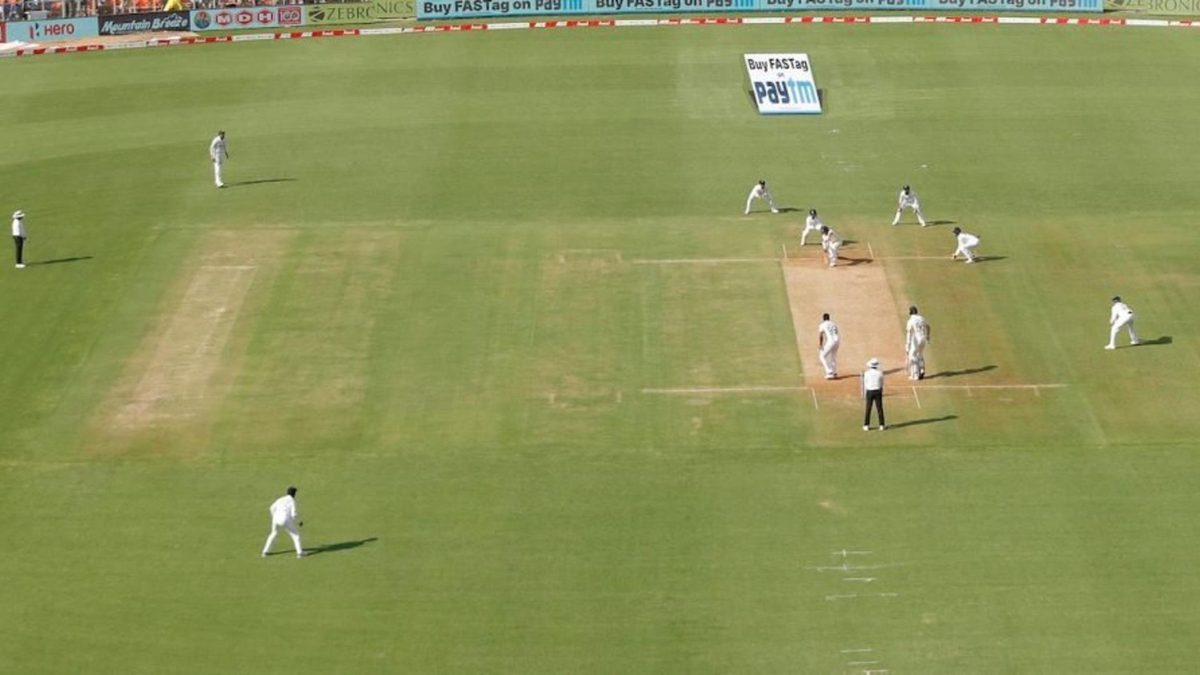
The Ahmedabad pitch has come under the scanner after the pink ball Test finished within two days with 17 wickets falling on day two, but that hasn’t deterred India’s players from defending the surface.
“I don’t think the quality of batting was up to standards….it was a good wicket to bat in the first innings.”
Virat Kohli’s comments at the post-match presentation ceremony sparked something close to fury as former players and experts questioned the rationale in the statement with 28 of the 30 wickets falling to spinners in the third India-England Test match, which finished inside two days.
Seventeen wickets fell on day two of the Test match with all of those going to the spinners, with England’s skipper and part-timer Joe Root taking five of those while leaking just eight runs.
If we are going to see these pitches … I have an answer to how it could work … Give the Teams 3 innings !!! 😜😜 #INDvENG
— Michael Vaughan (@MichaelVaughan) February 25, 2021
I’m all for a good contest between bat and ball in test match cricket but this pitch in Chennai is unacceptable at test match level. You can’t have the ball going through the top of the surface on day 1 from the main part of the pitch. Ie not from the footmarks.
— Mark Waugh (@juniorwaugh349) February 14, 2021
Scores would have been even lower in the last 2 tests if Jadeja had been playing. You know when Joe Root gets 5/8 the pitch is very questionable.
— Mark Waugh (@juniorwaugh349) February 25, 2021
finished in 2 days Not sure if that’s good for test cricket !If @anilkumble1074 and @harbhajan_singh bowled on these kind of wickets they would be sitting on a thousand and 800 ?🤔However congratulations to 🇮🇳 @akshar2026 what a spell! congratulations @ashwinravi99 @ImIshant 💯
— Yuvraj Singh (@YUVSTRONG12) February 25, 2021
Home advantage, yes. Bad batting, yes. But if you want to grow the game and attract more fans, Tests finishing in two days are not going to help. Sooner one realises, the better. Once fans and broadcasters bolt, no amount of jingoism and patriotism will save you #INDvsENG
— N.Sudarshan (@sudunarayan) February 25, 2021
Dr Narottam Puri: Surprised no one has questioned the sad state of the pitch at a magnificent stadium. If a Test ends in 2 days it is a clear indictment of a terrible pitch for Test. This is “Bad advertisement for Test pitch.” No Test should end in two days, he emphasizes !
— Vijay Lokapally (@vijaylokapally) February 25, 2021
According to the ICC, “A Poor pitch is one that does not allow an even contest between bat and ball,” it says, “either by favouring the batters too much, and not giving the bowlers (seam and spin) from either team sufficient opportunity to take wickets, or by favouring the bowlers too much (seam or spin), and not giving the batters from either team the opportunity to make runs.”
As the collapse from either side saw the match come to an early conclusion, a few stats were thrown around that backed up the notion of the pitch taking “too much spin”. This was the shortest completed Test match, in terms of number of balls (842), since 1935. The combined first innings totals of England and India (257 runs) was the second-lowest ever for a Test played in India.
But in the press conference, Indian opener Rohit Sharma, who top-scored in the Test with scores of 66 and 25*, agreed with his captain, terming it a “nice pitch” to bat on.
“Honestly speaking the pitch didn’t do anything. If I can recollect, lot of the balls the batters got out to was to straighter deliveries. We also didn’t bat well, not just them. The pitch had nothing, no demons as we call. It was a nice pitch to bat on. Once you’re in, you can score runs as well. You just need to apply and keep concentrating, and score runs,” Rohit said.
The ball not taking turn accounting for a majority of the wickets was used by both Kohli and Rohit to defend the pitch with the Indian skipper throwing a stat that “out of 30 wickets, 21 was to straight balls”. However, speaking on Channel 4’s coverage, former England captain Alastair Cook made the point that that doesn’t take into account the build up to a wicket falling, with sharp turn causing indecision in the batsman’s mind, making the straighter ball more effective.
There were some pundits who came out in support of the pitch and the contest it helped create.
I’ve been glued to my seat for a day and a half. Would rather pay to watch two days of intense bowling-dominated drama than a 600 for 4 vs 750 for 3 contest that drags on for five days. https://t.co/ctmBPNx2He
— Peter Della Penna (@PeterDellaPenna) February 25, 2021
“Virat Kohli worked his socks off to counter Jimmy Anderson in nippy English conditions.
English batsmen have to work hard to counter these spin conditions. Cannot complain.” @Swannyg66 on air 👏🏼👏🏼 #IndvEng
— Chetan Narula (@chetannarula) February 25, 2021
England out of World Test Championship.
That’s the main issue. Not the pitch. #IndvEng
— Chetan Narula (@chetannarula) February 25, 2021








